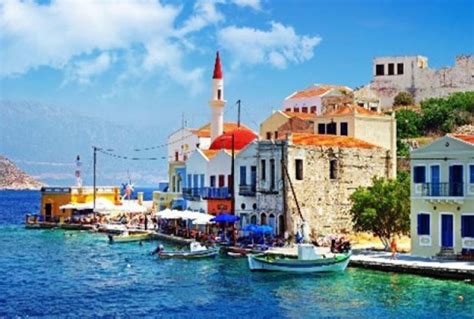Italy is renowned for its gastronomic delights, with a culinary tradition that is deeply rooted in history and culture. From iconic traditional dishes to regional specialties, Italy offers a diverse and mouthwatering array of cuisine that caters to every palate. In this blog post, we will take a tantalizing journey through Italy’s rich culinary heritage, exploring the influences, ingredients, and techniques that have shaped its remarkable food culture. Join us as we unveil Italy’s iconic dishes, discover regional specialties, and indulge in the country’s finest desserts and pastries. Get ready to embark on a virtual culinary adventure that will leave you craving for more.
Introduction to the Gastronomic Delights of Italy
Italy is famous for many things – its rich history, beautiful landscapes, and, of course, its delicious cuisine. Italian food is beloved all over the world for its bold flavors, fresh ingredients, and diverse range of dishes. In this blog post, we will be exploring the gastronomic delights of Italy, giving you a taste of what this extraordinary culinary culture has to offer.
One of the first things that comes to mind when we think of Italian food is pasta. Italy is home to an endless variety of pasta shapes and sauces, each region boasting its own unique recipes. From the hearty and comforting Bolognese sauce in the north to the light and delicate seafood-based sauces of the coastal regions, there is a pasta dish to suit every taste.
In addition to pasta, Italy is also famous for its pizza. Originating from Naples, this beloved dish has become a global sensation. Italian pizza is characterized by its thin and crispy crust, topped with the finest ingredients such as juicy tomatoes, fragrant basil, and creamy mozzarella cheese. Whether you prefer a classic margherita or a more adventurous combination of toppings, you are sure to find a pizza that satisfies your cravings.
Italian cuisine is not limited to pasta and pizza, however. The country is also renowned for its cured meats, cheeses, and fresh seafood. In fact, each region of Italy has its own specialty ingredients and traditional dishes that reflect the local culture and terroir. From the creamy burrata cheese of Puglia to the truffles of Umbria, exploring the regional specialties is like embarking on a culinary journey through the diverse landscapes of Italy.
Italy’s gastronomic delights are not only a result of the country’s fantastic natural ingredients, but also its rich culinary history. Over the centuries, Italy has been influenced by various cultures and civilizations, including the Greeks, Romans, Arabs, and Spanish. Each of these influences has left a mark on Italian cuisine, contributing to its unique and diverse flavors. Exploring Italy’s culinary history is like taking a step back in time and discovering the origins of the dishes we know and love today.
In conclusion, Italian cuisine is a treasure trove of gastronomic delights. From mouthwatering pasta dishes to heavenly pizzas and an array of regional specialties, Italy offers a culinary experience like no other. Whether you are a foodie or simply appreciate good food, exploring the cuisine of Italy is an adventure that will leave you craving for more.
Unveiling Italy’s Iconic Traditional Dishes
Italy is known for its rich culinary heritage. From delicious pasta dishes to savory pizzas and delectable pastries, Italian cuisine has captivated the taste buds of people all over the world. In this blog post, we will unveil some of Italy’s iconic traditional dishes that have become synonymous with its culinary culture.
One of the most popular and well-known Italian dishes is pizza. Originating from Naples, pizza is a flatbread topped with various ingredients such as tomatoes, mozzarella cheese, and a wide array of toppings like olives, mushrooms, and cured meats. The combination of the crispy crust, tangy tomato sauce, and melting cheese makes pizza a universally loved dish.
Another iconic Italian dish is pasta. Italy is renowned for its wide variety of pasta shapes and sauces. From spaghetti bolognese to fettuccine Alfredo, the possibilities are endless. Each region in Italy has its own unique way of preparing pasta, using fresh, quality ingredients that elevate the flavors to new heights.
No discussion of Italian cuisine would be complete without mentioning risotto. This creamy rice dish is often cooked with ingredients like mushrooms, seafood, or saffron, giving it a rich and comforting flavor. The secret to a perfect risotto lies in patiently adding broth and stirring continuously until the rice reaches a creamy consistency.
- Lasagna – layers of pasta sheets, meat, cheese, and tomato sauce, baked to perfection.
- Osso Buco – braised veal shanks cooked with vegetables and white wine, resulting in a tender and flavorful dish.
- Tiramisu – a heavenly dessert made with layers of coffee-soaked ladyfingers, mascarpone cheese, and cocoa.
Italy’s iconic traditional dishes are not just about taste; they are also a reflection of its cultural history and regional diversity. Each dish tells a story and connects people to their heritage. So, the next time you have an opportunity, be sure to indulge in these culinary delights and experience the true essence of Italy.
| Dish | Region of Origin |
|---|---|
| Pizza | Naples |
| Pasta | Various regions |
| Risotto | Lombardy |
Discovering Regional Specialties Across Italy
Italy is renowned for its delectable cuisine, and one of the most fascinating aspects of Italian food culture is the incredible diversity of regional specialties. Each region boasts its own unique dishes and ingredients, resulting in a culinary landscape that is as diverse as it is delicious.
One of the most well-known regions for its culinary offerings is Emilia-Romagna. Located in northern Italy, Emilia-Romagna is home to iconic dishes such as Parmigiano-Reggiano cheese and balsamic vinegar. The region is also famous for its pasta, with specialties like tortellini, tagliatelle, and lasagna. Whether you visit the picturesque city of Bologna or venture into the countryside, you are sure to discover an array of mouthwatering regional specialties that will leave you craving more.
Heading south, the region of Campania beckons with its own delicious treats. Naples, the birthplace of pizza, is located in this region, and you can expect to find some of the best pizza in the world here. The city is known for its Neapolitan-style pizza, which features a slightly thicker crust and fresh, simple toppings. Other regional specialties include buffalo mozzarella, a soft and creamy cheese that is a staple in many dishes, and sfogliatelle, a flaky pastry filled with sweet ricotta cream.
- Emilia-Romagna: Parmigiano-Reggiano cheese, balsamic vinegar, tortellini, tagliatelle, lasagna
- Campania: Neapolitan-style pizza, buffalo mozzarella, sfogliatelle
As we travel further south, we arrive in Sicily, an island with a rich culinary heritage. Sicilian cuisine is known for its bold flavors and unique combinations. One of the most famous dishes from the region is arancini, deep-fried rice balls filled with various ingredients such as ragù, cheese, or spinach. Another must-try specialty is cannoli, crispy pastry tubes filled with sweet ricotta cream and often garnished with candied fruit or chocolate chips. Sicilian cuisine reflects the island’s history of being influenced by various cultures, resulting in a truly delightful and diverse food culture.
Italy’s regional specialties are a testament to the country’s culinary richness and diversity. From the creamy cheeses and pasta dishes of Emilia-Romagna to the mouthwatering pizzas of Campania and the bold flavors of Sicilian cuisine, each region offers its own gastronomic delights. Exploring Italy’s regional specialties is a journey that will tantalize your taste buds and leave you with a deep appreciation for the country’s culinary heritage.
| Region | Specialties |
|---|---|
| Emilia-Romagna | Parmigiano-Reggiano cheese, balsamic vinegar, tortellini, tagliatelle, lasagna |
| Campania | Neapolitan-style pizza, buffalo mozzarella, sfogliatelle |
| Sicily | Arancini, cannoli |
Exploring Italy’s Rich Culinary History and Influences
Italy is known for its delicious and diverse cuisine, which is influenced by a rich culinary history spanning thousands of years. The country’s gastronomic heritage can be traced back to ancient times when the Roman Empire flourished. Over the centuries, Italy has been shaped by various cultural influences, including the Etruscans, Greeks, Arabs, and Normans. Each invader brought their own unique flavors and techniques, which blended with the local traditions to create the distinctive Italian cuisine we know today.
One of the key factors in Italy’s culinary history is its geographical location. The country is blessed with a favorable climate, fertile soil, and a diverse landscape that produces a wide variety of ingredients. From the northern regions, with their alpine pastures and dairy farms, to the southern coasts, with their abundant seafood, Italy offers a vast array of fresh and high-quality ingredients that form the foundation of its cuisine.
Another significant influence on Italian cuisine comes from its ancient trading routes. In ancient times, Italy was a hub of international trade, attracting merchants from all over the world. This global exchange of goods and ideas greatly enriched the local culinary scene. For example, the Arabs introduced spices such as cinnamon, nutmeg, and saffron, which are still commonly used in Italian cooking. The Greeks brought olives and olive oil, which remain staples of the Mediterranean diet.
- The Roman Influence: The Romans had a profound impact on Italian cuisine. They introduced new farming techniques, such as irrigation and crop rotation, which increased agricultural productivity. They also brought new ingredients, including wheat, wine, and various fruits and vegetables. The Romans loved extravagant feasts and were famous for their elaborate banquets, which featured a wide array of dishes and exotic flavors.
- The Renaissance and Beyond: The Renaissance period marked a turning point in Italy’s culinary history. During this time, Italian chefs started to focus more on the natural flavors of ingredients and the art of cooking. They developed new techniques, such as sautéing, braising, and baking, and created elaborate dishes that showcased the culinary skills of the chefs. The Renaissance also saw the rise of the Italian aristocracy, who patronized the arts and commissioned lavish banquets as a means of displaying their wealth and power.
- Regional Diversity: Italy’s culinary heritage is not just influenced by its history but also by its regional diversity. Each region in Italy has its own distinct culinary traditions and specialties. For example, the northern regions are known for their rich and creamy sauces, such as Béchamel and Carbonara, while the south is famous for its spicy and vibrant dishes, such as Arrabbiata and Caponata. The central regions, on the other hand, have a preference for simple and rustic dishes, such as Pasta alla Norma and Ribollita.
| Period | Influences |
|---|---|
| Ancient Times | Etruscans, Greeks, Arabs, Normans |
| Roman Empire | New farming techniques, wheat, wine, fruits, vegetables |
| Renaissance | Natural flavors, cooking techniques, lavish banquets |
| Regional Diversity | Distinct culinary traditions and specialties |
In conclusion, exploring Italy’s rich culinary history and influences is like embarking on a culinary journey through time. From the ancient Romans to the Renaissance period and the diverse regional traditions, Italian cuisine has been shaped and enriched by a multitude of factors. The combination of high-quality ingredients, cultural exchanges, and a deep appreciation for food has made Italian cuisine one of the most beloved and influential cuisines in the world.
Indulging in Italy’s Finest Desserts and Pastries
Italy is not only known for its exquisite pasta and pizza but also for its mouthwatering desserts and pastries. Italian desserts are renowned worldwide for their rich flavors, delicate textures, and artistic presentations. Whether you have a sweet tooth or simply appreciate the art of baking, indulging in Italy’s finest desserts and pastries is an experience like no other.
When it comes to Italian desserts, gelato is a must-try. Unlike traditional ice cream, gelato has a smoother and denser texture, thanks to its lower fat content and slower churning process. Made with fresh and natural ingredients, gelato is available in a wide array of flavors, from classic options like vanilla and chocolate to more unique choices like salted caramel and pistachio. Be sure to visit a gelateria and savor this cool treat on a warm Italian afternoon.
No discussion about Italian desserts would be complete without mentioning tiramisu. This iconic dessert, which means “pick me up” in Italian, combines layers of espresso-soaked ladyfingers, creamy mascarpone cheese, and a sprinkle of cocoa on top. Its balanced flavors and creamy texture make it a favorite among locals and tourists alike. Be sure to sample this delectable treat at a traditional Italian trattoria.
Frequently Asked Questions
Q1: What are some iconic traditional dishes of Italy?
Some iconic traditional dishes of Italy include pasta carbonara, spaghetti Bolognese, margherita pizza, lasagna, and risotto.
Q2: What are regional specialties across Italy?
Regional specialties across Italy include Neapolitan pizza from Naples, prosciutto di Parma from Emilia-Romagna, gelato from Sicily, and pesto from Liguria.
Q3: What is the culinary history of Italy?
Italy has a rich culinary history, influenced by ancient Roman cuisine, Mediterranean flavors, and the introduction of ingredients like tomatoes and potatoes from the New World.
Q4: What are some of Italy’s finest desserts and pastries?
Some of Italy’s finest desserts and pastries include cannoli from Sicily, tiramisu from Veneto, panna cotta from Piedmont, and sfogliatelle from Campania.
Q5: How can I indulge in the gastronomic delights of Italy?
You can indulge in the gastronomic delights of Italy by visiting local trattorias and restaurants, trying traditional dishes at street food markets, and participating in food and wine tours.
Q6: What are some must-try dishes when visiting Italy?
Some must-try dishes when visiting Italy include spaghetti alle vongole (spaghetti with clams), ossobuco (braised veal shanks), caprese salad (mozzarella, tomatoes, and basil), and gelato (Italian ice cream).
Q7: How has Italy’s culinary heritage influenced other cuisines?
Italy’s culinary heritage has influenced cuisines worldwide, with Italian dishes like pasta and pizza being popular and adapted in various forms in different countries. Italian ingredients and flavors have also been incorporated into international dishes.
EDITOR
Categories
Recent Articles

NotteGlobal’s May 2024 Real Estate Report: A Comprehensive Analysis of Turkey’s Market Trends
June 22, 2024

New Immigration Policy in the US: A Major Step for Family Unity
June 21, 2024

Second Largest Investor Group in Greece: Turks
June 14, 2024

Exploring the Hidden Gems of Athens Riviera: A Guide to Luxurious Neighborhoods
June 3, 2024

Economic Stability and Growth in Turkey
May 31, 2024

Turkey’s Housing Sales Statistics for April 2024: A Comprehensive Analysis
May 24, 2024

BNP Paribas Forecasts End-of-Year USD/TRY Rate
May 3, 2024

Significant Updates to the Greece Golden Visa Program in 2024
April 29, 2024

€800,000: New Threshold for Greece’s Golden Visa
February 10, 2024

Golden Visa for Spain
December 27, 2023


